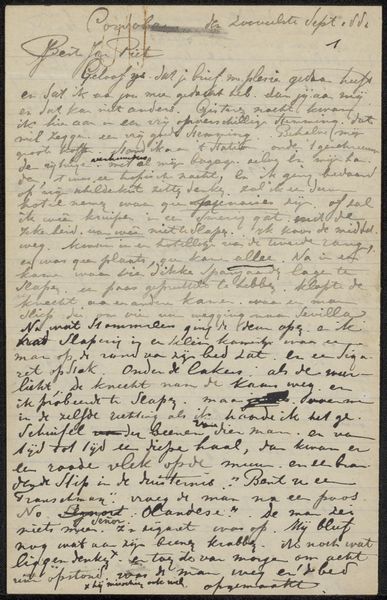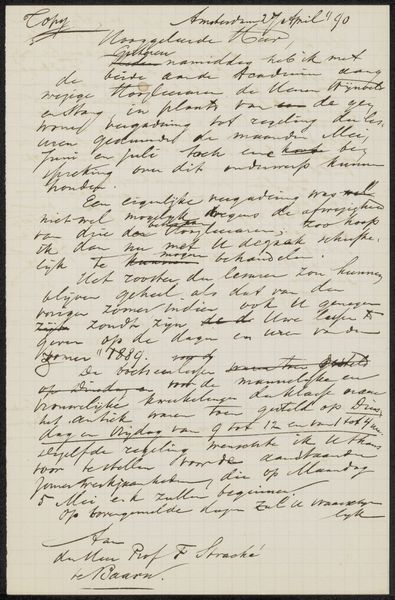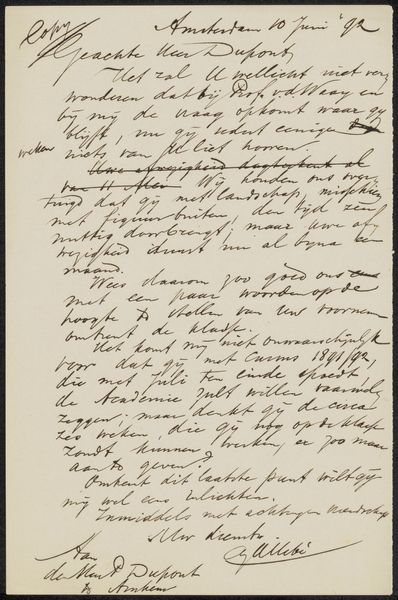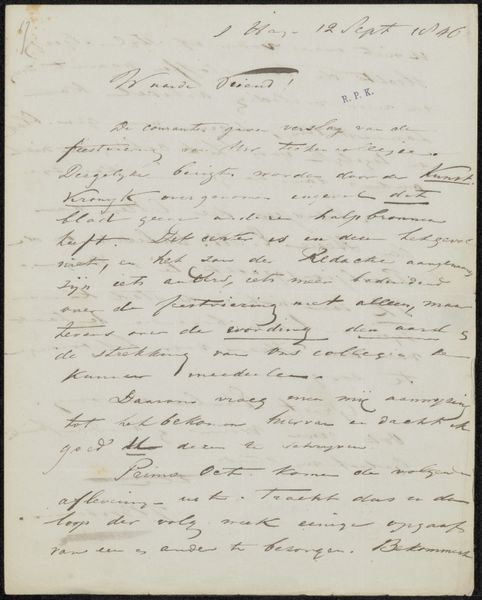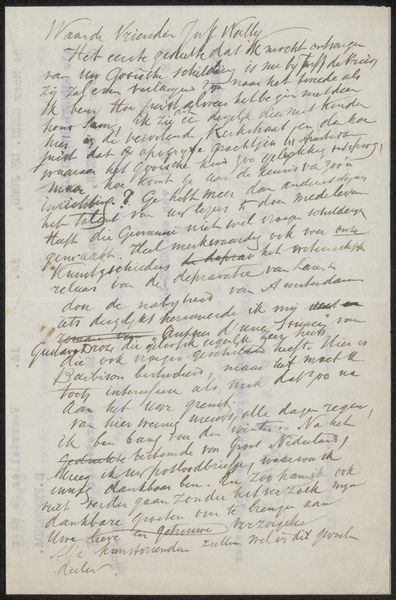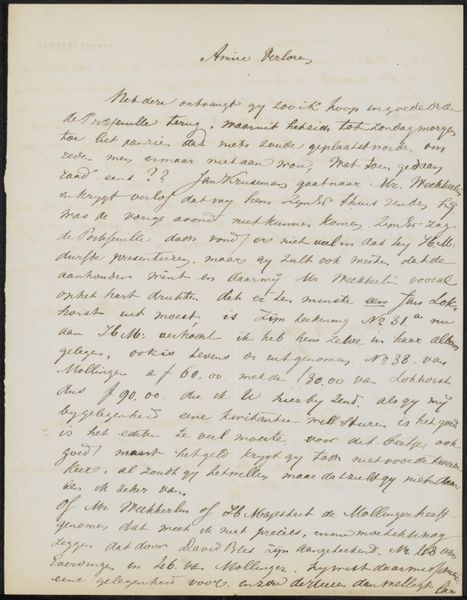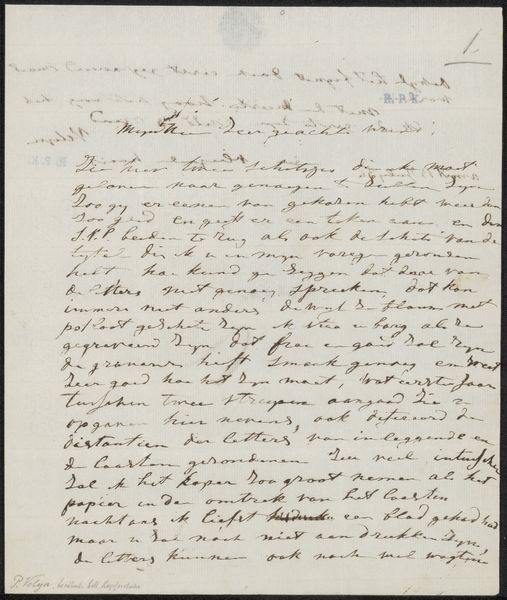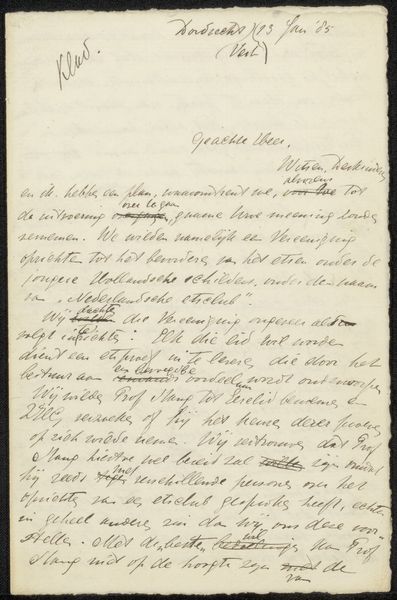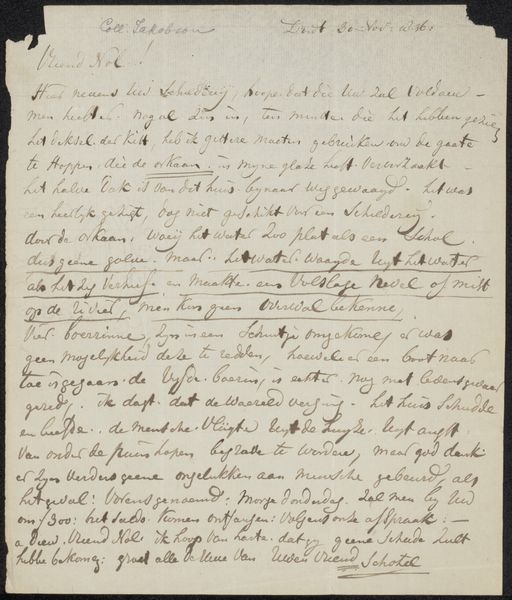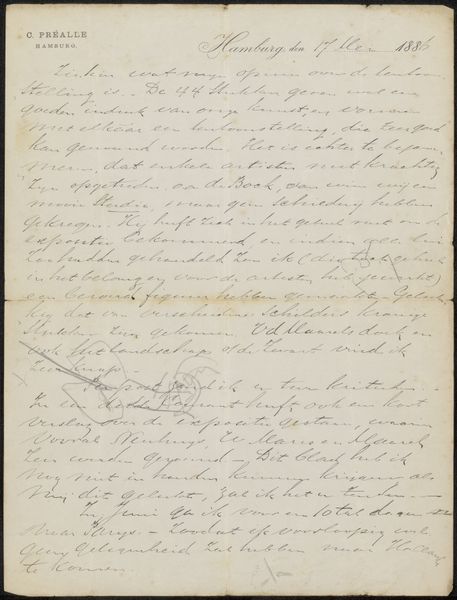
drawing, paper, ink, pen
#
drawing
#
paper
#
ink
#
pen
Copyright: Rijks Museum: Open Domain
Editor: We're looking at "Brief aan Christiaan Kramm," possibly from 1857 by Joseph Hartogensis, held at the Rijksmuseum. It's a drawing made with pen and ink on paper. The script seems frantic and somewhat crammed. What strikes you first about this letter? Curator: The most immediate element is its textual nature. A dense configuration of characters forming linguistic units. We are presented with what seems to be a message, but our ability to extract meaning is mediated by calligraphic style, letter forms, the materiality of the ink, and their arrangement on the page. Are we to approach this as pure text, or a field of graphic marks? Editor: So, it’s about how we perceive the handwriting as much as the letter itself? I didn't think about that! Curator: Precisely. The density and variations in the ink suggest pressure, speed, and a potential urgency to the communication. Note the systematic ordering but with spontaneous deviations. Consider the deviations in relation to conventional script – where does meaning reside? Is it within standardized forms or individualized expression? Editor: So, by analysing these tiny elements – the shapes of letters and ink density, we get a sense of the feeling conveyed by the artwork, separate from the words themselves. Curator: In part. Our interpretative agency engages at these minute, 'formal' levels. And yet the *idea* of its textual purpose cannot be fully ignored as a grounding element. Editor: I guess I was trying too hard to figure out what the letter actually *said*! This has given me a whole new approach to viewing this piece. Curator: Indeed, considering form allows a different access point to understand content.
Comments
No comments
Be the first to comment and join the conversation on the ultimate creative platform.

